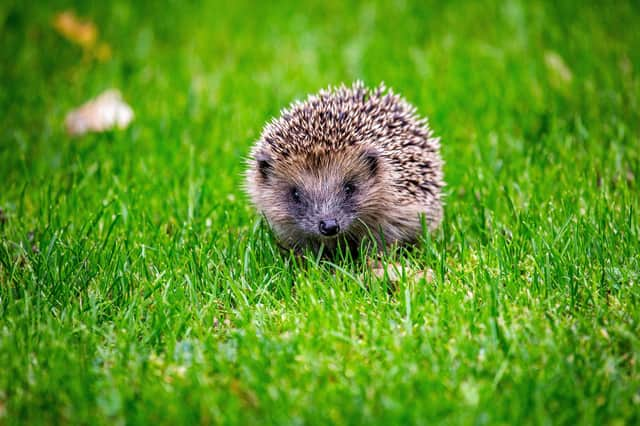6 tips on how to look after winter wildlife in your garden
This article contains affiliate links. We may earn a small commission on items purchased through this article, but that does not affect our editorial judgement.


The garden experts at GardenBuildingsDirect.co.uk have put together their top tips for taking care of any wildlife still hibernating and those starting to wake up.
These helpful tips include leaving out food and water for travelling creatures such as birds and hedgehogs, and adding nectar-rich plants for early bees and pollinators.
Advertisement
Hide AdAdvertisement
Hide AdOther advice includes adding wildlife-friendly plants into your garden design and avoiding turning or disrupting compost piles to protect sleeping frogs.
A spokesperson from GardenBuildingsDirect.co.uk said: “With the days getting longer and a little bit of warmth in the sunshine, it’s very easy to want to get out in the garden and start clearing all the dead plants and leaves ahead of spring.
“But it’s worth waiting just a little longer. There will still be wildlife hibernating in your garden and you certainly don’t want to disturb their winter refuge until you have to.
“There are lots of other things you can do to help accomodate winter wildlife in your garden, like thinking about your planting and leaving out foods for insects and wildlife coming out of hibernation early.”
Advertisement
Hide AdAdvertisement
Hide AdHere are GardenBuildingDirect.co.uk’s top tips on caring for winter wildlife.
Looking after hedgehogs
Avoid disturbing hibernating hedgehogs by holding off on any garden tidy ups. Piles of leaves and logs are all favourite winter spots. If you spot a hedgehog in your garden, they love meaty cat or dog food.
Protecting bees
If the weather becomes milder this month, then some bees may emerge on the hunt for early spring nectar. Make sure you have plants in the garden which offer them food. Spring favourites including primroses, snowdrops and crocuses are all good for this.
Caring for the birds
The longer daylight hours don’t automatically correlate to an abundance of food for our feathered friends. Make sure you have high fat content bird food and on icy mornings, break the ice on bird baths. Remember to clean out nest boxes too - birds start to look for new places to raise their young this month.
Wildlife friendly plants
Advertisement
Hide AdAdvertisement
Hide AdIf you’re planning a garden redesign or are just looking to brighten up your existing space, there are some easy ways to introduce wildlife-friendly choices. For immediate colour, try planting primroses in pots on your patio - these can then be transferred to the garden. If you’re planning further ahead, make sure to include colourful nectar rich flowers into your plans. These will attract bees, butterflies and other insects. Berry and fruit bushes are worth considering too as these are a great source of food.
Leave your compost alone
Frogs may have taken refuge in your compost bin over the winter so avoid turning or disrupting it. Wait until April or when the weather starts to warm up to give them a chance to hop out of the pile.
Hedge trimming
If your hedges need a pre-spring tidy up, wait until the birds have eaten any remaining berries. If your hedge is a popular spot for nesting birds, try to cut before March when the breeding season starts.